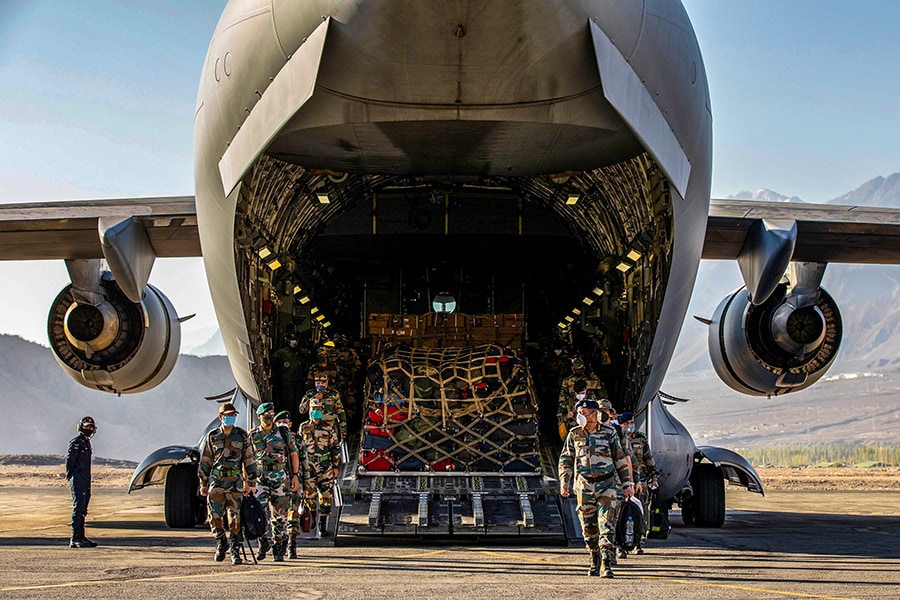
America sees opportunity in India-China conflict
Weeks after India and China engaged in their deadliest border clash in decades, the sight of an American nuclear-powered aircraft carrier—USS Nimitz, entering the Bay of Bengal draws attention across the region., with experts calling it "symbolic" of the US's support of India
 Indian soldiers disembark from a military transport plane at a forward airbase in Leh, in the Ladakh region, September 15, 2020. REUTERS/Danish Siddiqui
Indian soldiers disembark from a military transport plane at a forward airbase in Leh, in the Ladakh region, September 15, 2020. REUTERS/Danish Siddiqui
WASHINGTON — Weeks after India and China engaged in their deadliest border clash in decades, the sight of an American nuclear-powered aircraft carrier entering the Bay of Bengal drew attention across the region.
The carrier, the USS Nimitz, and its strike group deployed to the area in mid-July to conduct an exercise with the Indian Navy in pursuit of a “free and open Indo-Pacific,” according to a statement by the U.S. Navy’s 7th Fleet, whose headquarters are in Japan. But as tensions soar between India and China, two nuclear-armed neighbors, the joint operation took on a greater significance.
“It was symbolic,” said Tanvi Madan, the director of the India Project at the Brookings Institution. “It’s also signaling to China and others that the U.S. is standing by India.”
As the rivalry between India and China intensifies, the United States and India have taken their shared anger toward Beijing and forged stronger diplomatic and military ties that could alter the balance of power in the region. Officials note that while that friendship has been on an upswing over the past two decades, the border dispute with China has accelerated relations between the countries.
“Both the U.S. and India have recognized the importance of the other,” said Nisha Biswal, an assistant secretary of state for South and Central Asian affairs during the Obama administration. “It’s not a surprise that the Indians are looking for like-minded strategic and security partners, given concerns around a destabilizing environment in the Indo-Pacific.”
©2019 New York Times News Service




